Galvanized mild steel pipe
Mild Steel Pipe Galvanized is a tubular shaped pipe of galvanized Mild Steel.
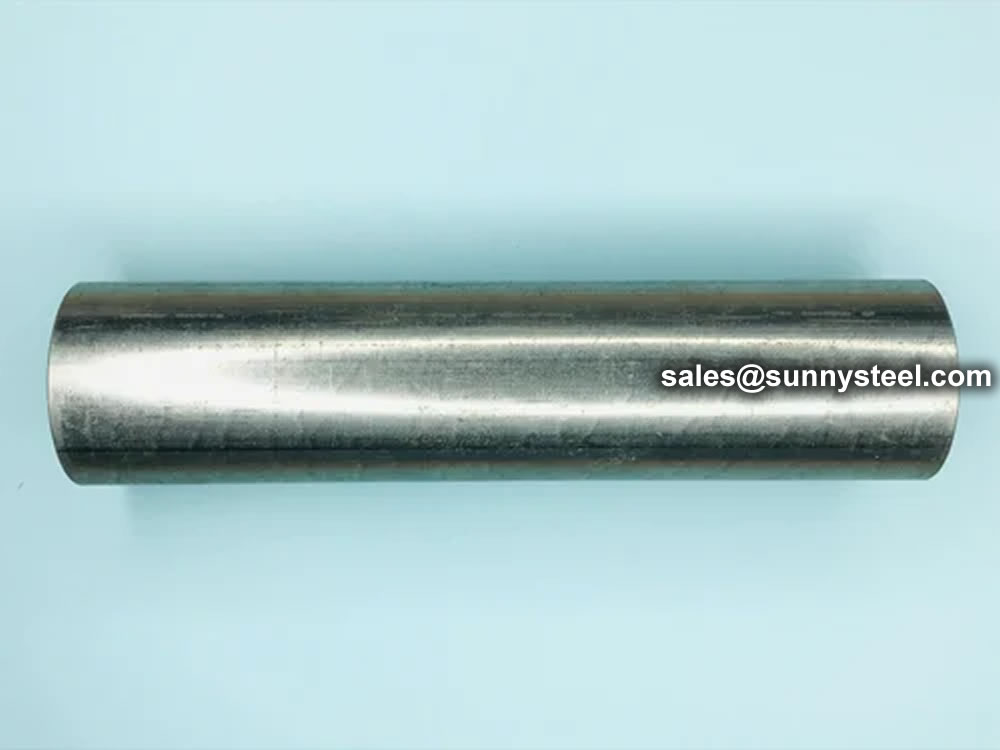
Pre-galvanized steel pipe is made of galvanized steel strip. However, it’s antiseptic properties is poor than hot dipped galvanized steel pipe.
A pre-galvanized steel tube is a steel tube that is galvanized a steel sheet before it is formed and welded into a tube.
Steel tubes that are formed and galvanized afterwards are sometimes referred to as post-galvanized steel tubes, but hot-dipped steel tubes is a more commonly used expression.
Galvanized steel pipe or galvanized steel tube is the most popular type of galvanized steel tube manufacturing because the equipment required for manufacturing is relatively inexpensive and the process is highly scalable. Unlike hot-dip steel tube, the time required for galvanizing the steel sheet is short, so the alloy layer in which iron and zinc are mixed is small and the pure zinc layer is thick.
However, since the zinc applied to the steel sheet is removed by the heat upon welding the pre-galvanized steel tube, re-sealing the exposed steel on the outside surface with zinc thermal spray is a required post-treatment process. This also means that the welding seam on the inside of the steel tube is not galvanized. The sacrificial anode properties of zinc allow for leaving the inner welding seam exposed without reducing the corrosion resistance and longevity of the product.
Pre-galvanization, also known as mill galvanization, involves passing a steel sheet through molten zinc. After this process, the sheet is cut to the desired size and recoiled. During pre-galvanization, a specific thickness of zinc coating is applied to the entire sheet. For instance, pre-galvanized Z275 steel has a zinc coating of 275 grams per square meter.
One notable advantage of pre-galvanized steel compared to hot-dip galvanized steel is its improved appearance. Additionally, it tends to be more cost-effective. Pre-galvanized materials find application in a wide range of products, including conduit, lip, and open channels.
As hot dipped galvanization requires dipping the whole steel/metals into the molten vat of zinc, the galvanized steel coming out from this process has a continuous coating over the surface. Pre-galvanizing is performed at the first stage before the sheets are cut into sizes and pieces so the cut edges are not coated.
Production standard: ASTM, JIS, BS, DIN, EN, API, GB
Section type: round, square, rectangular, oval and other special section type.
Pre galvanized Rectangular tubes are the industry standard for fence framework, Contractors, architects, engineers. Architects and landscape architects have used steel fencing to design a variety of shelters, lighting standards and decorative sculptures for street-scapes, parks, bus and light rail stops, shopping centers, malls, sports stadiums, office buildings, parking lots and other facilities. Steel fence post are carefully designed with clean lines, structural integrity and ease of installation. These fences are available in variety of heights and widths in multiple configurations.
| ND | Outside Diameter (mm) | W.T. | Weight of Black Pipe (kg/m) | |||
|---|---|---|---|---|---|---|
| Nominal Size (DN) | Screw Identifiers | Maximum | Minimum | Thickness | Plain end pipe | Threaded and With Coupler |
| 15 | 1/2 | 21.4 | 21.0 | 2.0 | 0.947 | 0.956 |
| 20 | 3/4 | 26.9 | 26.4 | 2.3 | 1.38 | 1.39 |
| 25 | 1 | 33.8 | 33.2 | 2.6 | 1.98 | 2.00 |
| 32 | 11/4 | 42.5 | 41.9 | 2.6 | 2.54 | 2.57 |
| 40 | 11/2 | 48.4 | 47.8 | 2.9 | 3.23 | 3.27 |
| 50 | 2 | 60.2 | 59.6 | 2.9 | 4.08 | 4.15 |
| 65 | 21/2 | 76.0 | 75.2 | 3.2 | 5.71 | 5.83 |
| 80 | 3 | 88.7 | 87.9 | 3.2 | 6.72 | 6.89 |
| 100 | 4 | 113.9 | 113.0 | 3.6 | 9.75 | 10.0 |
| ND | Outside Diameter (mm) | W.T. | Weight of Black Pipe (kg/m) | |||
|---|---|---|---|---|---|---|
| Nominal Size (DN) | Screw Identifiers | Maximum | Minimum | Thickness | Plain end pipe | Threaded and With Coupler |
| 15 | 1/2 | 21.7 | 21.1 | 2.6 | 1.21 | 1.22 |
| 20 | 3/4 | 27.2 | 26.6 | 2.6 | 1.56 | 1.57 |
| 25 | 1 | 34.2 | 33.4 | 3.2 | 2.41 | 2.43 |
| 32 | 11/4 | 42.9 | 42.1 | 3.2 | 3.10 | 3.13 |
| 40 | 11/2 | 48.8 | 48.0 | 3.2 | 3.57 | 3.61 |
| 50 | 2 | 60.8 | 59.8 | 3.6 | 5.03 | 5.10 |
| 65 | 21/2 | 76.6 | 75.4 | 3.6 | 6.43 | 6.55 |
| 80 | 3 | 89.5 | 88.1 | 4.0 | 8.37 | 8.54 |
| 100 | 4 | 114.9 | 113.3 | 4.5 | 12.2 | 12.5 |
| 125 | 5 | 140.6 | 138.7 | 5.0 | 16.6 | 17.1 |
| 150 | 6 | 166.1 | 164.1 | 5.0 | 19.7 | 20.3 |
Pre-galvanized steel pipes are used in the following fields, steel structure, build structure, guard rail, fence, metal furniture etc. our products are exported to about 50 countries in the world, we get a lot of recognition from many customers since our good quality and service.
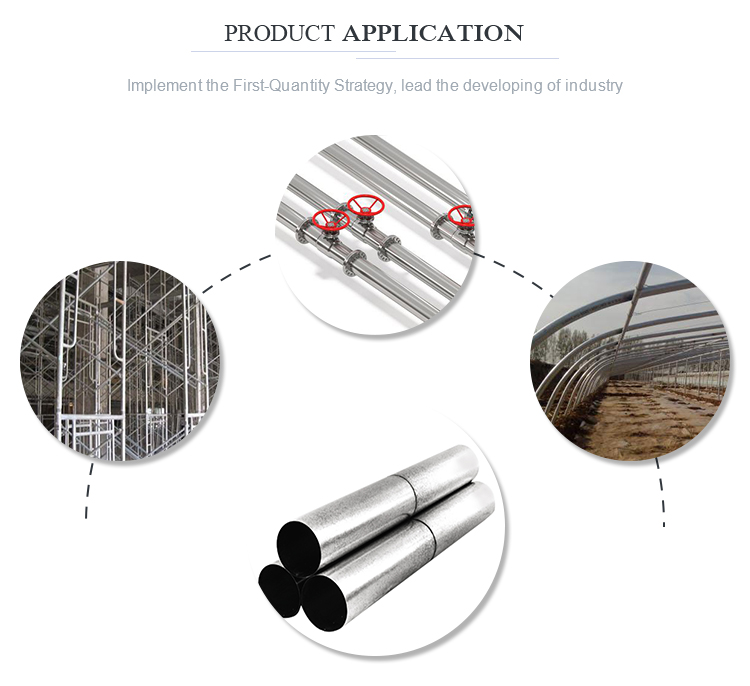
Special welded tubes, often used in critical industrial applications, require careful handling and transportation to ensure they reach their destination in optimal condition. These tubes may vary in size, material, and specifications, making their proper delivery essential.
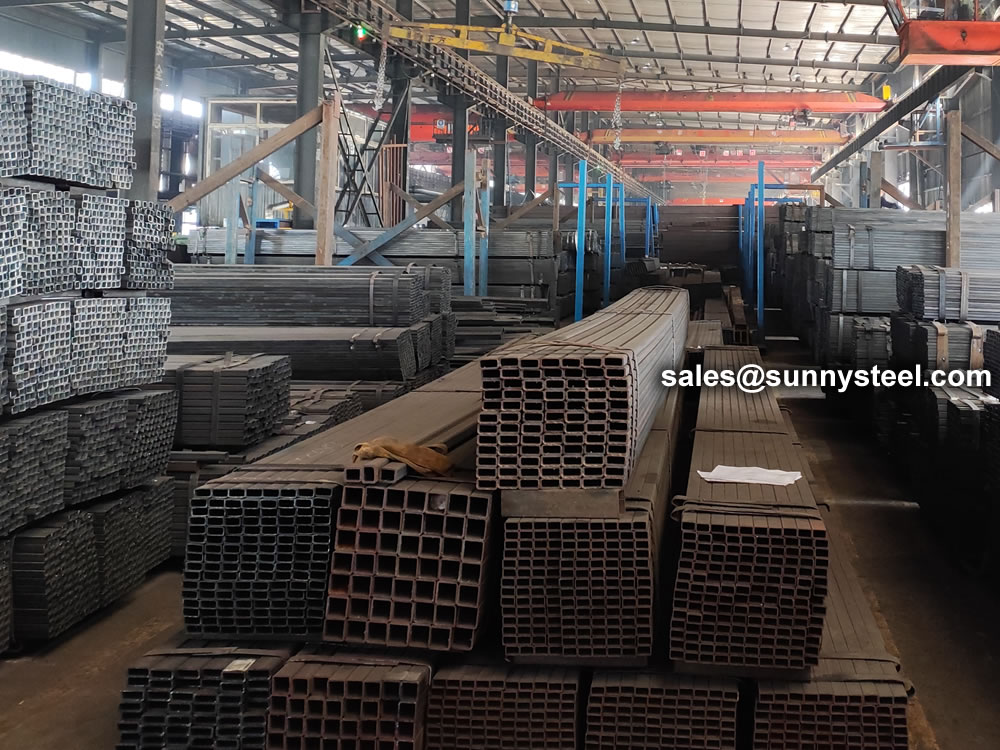
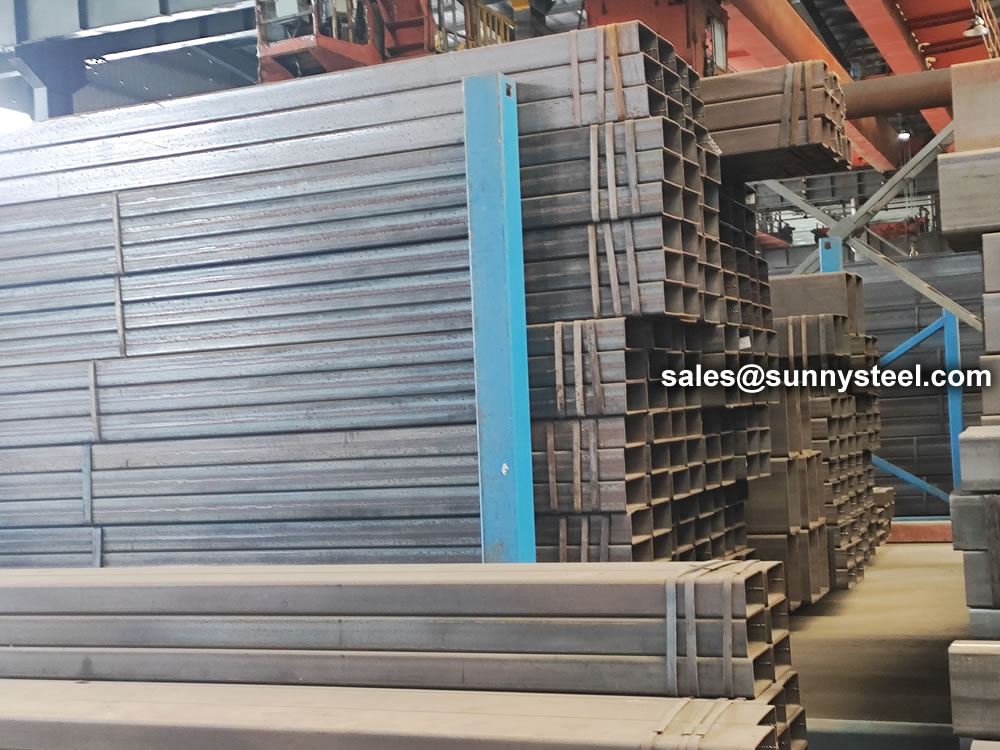
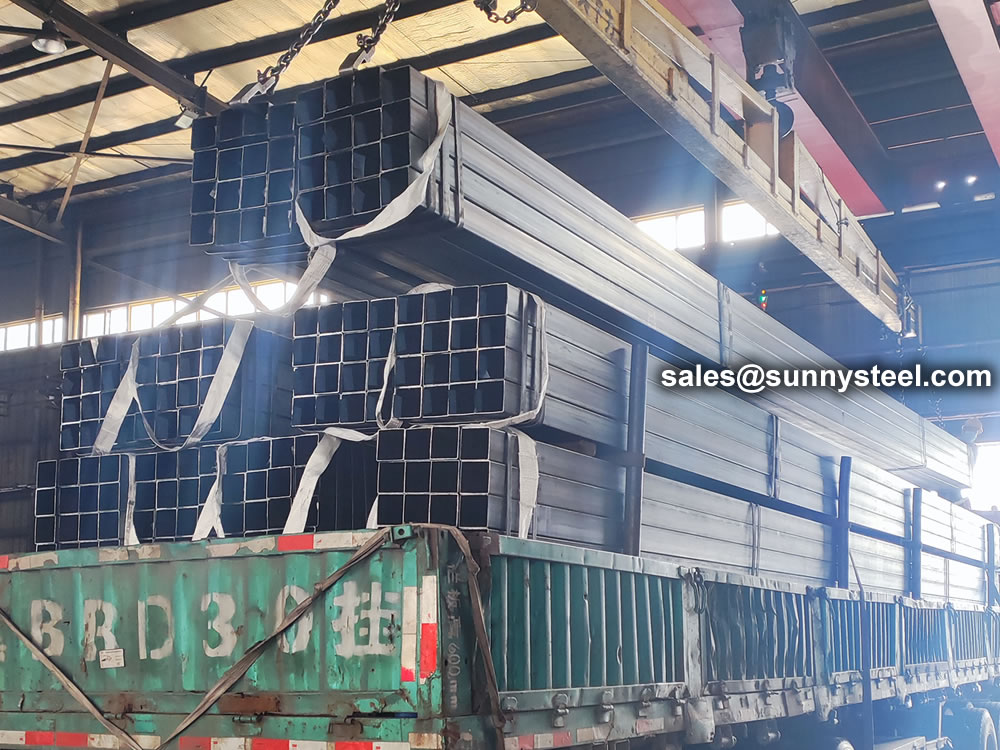
| Product Name | Executive Standard | Dimension (mm) | Steel Code / Steel Grade |
|---|---|---|---|
| Casting | API 5CT | Ø48.3~273 x WT2.77~11.43 | J55, K55, N80, L80 |
| Tubing | API 5CT | Ø48.3~273 x WT2.77~11.43 | J55, K55, N80, L80, H40 |
| Product Name | Executive Standard | Dimension (mm) | Steel Code / Steel Grade |
|---|---|---|---|
| Line Pipes | API 5L | Ø60.3~273.1 x WT2.77~12.7 | A25, A, B, X42, X46, X52, X56, X60, X65, X70, X80 |
| Product Name | Executive Standard | Dimension (mm) | Steel Code / Steel Grade |
|---|---|---|---|
| Electric-Resistance-Welded Steel Pipes | ASTM A135 | Ø42.2~114.3 x WT2.11~2.63 | A |
| Electric-Resistance-Welded Carbon Steel and Carbon-Manganese Steel Boiler and Superheater Tubes | ASTM A178 | 42.2-114.3 x 2.11-2.63 | A, C, D |
| ERW and Hot-dip Galvanized Steel Pipes | ASTM A53 | Ø21.3~273 x WT2.11~12.7 | A, B |
| Pipes for Piling Usage | ASTM A252 | Ø219.1~508 x WT3.6~12.7 | Gr.2, Gr.3 |
| Tubes for General Structural Purpose | ASTM A500 | Ø21.3~273 x WT2.11~12.7 | Gr.2, Gr.3 |
| Square Pipes for General Structural Purpose | ASTM A500 | 25 x 25~160 x 160 x WT1.2~8.0 | Carbon Steel |
| Product Name | Executive Standard | Dimension (mm) | Steel Code / Steel Grade |
|---|---|---|---|
| Threaded Steel Pipes | DIN 2440 | Ø21~164 x WT2.65~4.85 | Carbon Steel |
| Product Name | Executive Standard | Dimension (mm) | Steel Code / Steel Grade |
|---|---|---|---|
| Screwed and Socketed Steel Tubes | BS 1387 | Ø21.4~113.9 x WT2~3.6 | Carbon Steel |
| Scaffolding Pipes | EN 39 | Ø48.3 x WT3.2~4 | Carbon Steel |
| Product Name | Executive Standard | Dimension (mm) | Steel Code / Steel Grade |
|---|---|---|---|
| Carbon Steel Tubes for General Structure Purpose | JIS G3444 | Ø21.7~216.3 x WT2.0~6.0 | Carbon Steel |
| Carbon Steel Tubes for Machine Structure Purpose | JIS G3445 | Ø15~76 x WT0.7~3.0 | STKM11A, STKM13A |
| Carbon Steel Pipes for Ordinary Piping | JIS G3452 | Ø21.9~216.3 x WT2.8~5.8 | Carbon Steel |
| Carbon Steel Pipes for Pressure Service | JIS G3454 | Ø21.7~216.3 x WT2.8~7.1 | Carbon Steel |
| Carbon Steel Rigid Steel Conduits | JIS G8305 | Ø21~113.4 x WT1.2~3.5 | G16~G104, C19~C75, E19~E75 |
| Carbon Steel Rectangular Pipes for General Structure | JIS G3466 | 16 x 16~150 x 150 x WT0.7~6 | Carbon Steel |
The alloy content of the coil is often lower than similar grades of steel plate, improving the weldability of the spiral welded pipe. Due to the rolling direction of spiral welded pipe coil is not perpendicular to the pipe axis direction, the crack resistance of the spiral welded pipe materials.
Welded steel pipe refers to a steel pipe with seams on the surface that is welded by bending and deforming a steel strip or steel plate into a circular, square or other shape. The blanks used for welded steel pipes are steel sheets or strips.
Since the 1930s, with the rapid development of continuous rolling production of high-quality strip steel and the advancement of welding and inspection technology, the quality of welds has been continuously improved, and the varieties and specifications of welded steel pipes have been increasing.
When the T-shaped welded steel pipe contains Ni, it has strong corrosion resistance in an acidic environment. In an environment containing sulfuric acid or hydrochloric acid, the higher the Ni content in the T-shaped welded steel pipe, the stronger the corrosion resistance. Under normal circumstances, only adding Cr to the T-shaped welded steel pipe can prevent the phenomenon of corrosion. The poor edge condition of the strip is another important cause of misalignment. The effects of changes in mass flow, heat flow density and structural parameters (ratio of helical curvature diameter to T-shaped welded steel pipe diameter Dc/D) on the heat transfer coefficient of saturated bubble boiling in vertical spiral pipes.
During the production of T-shaped welded steel pipes, misalignment occurs from time to time, and there are many influencing factors. In production practice, the steel pipe is often degraded by the wrong side and out of tolerance. Therefore, it is necessary to analyze the reasons for the misalignment of the spiral steel pipe and its preventive measures.
Due to the poor shape and dimensional accuracy of the head and tail of the uncut steel strip, it is easy to cause the steel strip to bend hard and cause misalignment during butt joint. Simulation parameter range: vertical pipe: pipe diameter D=10mm, pipe length L=660mm; three types of vertical T-shaped welded steel pipe: pipe diameter D=10mm, the change of the ratio of the curvature diameter of the T-shaped welded steel pipe to the spiral pipe diameter is Dc /D=15, 20, 25, helical pitch Pt=20mm, tube lengths are L=503mm, L=660mm, L=817mm respectively. Mass flow G=200~400Kg/(m'2 s), heat flux density q=5~15KW/m'2, saturation pressure p, saturation=0.414880MPa, saturation temperature T, saturation=283.15K.
The technical requirements and inspection of welded pipes are based on the provisions of the GB3092 "Welded Steel Pipes for Low-Pressure Fluid Transmission". It can be delivered according to fixed length or double length. The surface of the steel pipe should be smooth, and defects such as folds, cracks, delamination, and lap welding are not allowed. The surface of the steel pipe is allowed to have minor defects such as scratches, scratches, weld misalignment, burns and scars that do not exceed the negative deviation of the wall thickness. The thickening of the wall thickness and the presence of inner seam weld bars are allowed at the weld.
Welded steel pipes should be subjected to mechanical performance test, flattening test and flaring test, and must meet the requirements of the standard. When the steel pipe should be able to withstand the internal pressure, carry out a pressure test of 2.5Mpa, and keep it for one minute without leakage. The method of eddy current flaw detection is allowed to replace the hydrostatic test. The eddy current flaw detection is carried out according to the standard of GB7735 "Steel tube eddy current flaw detection inspection method". The eddy current flaw detection method is to fix the probe on the frame, keep a distance of 3~5mm between the flaw detection and the weld seam, and conduct a comprehensive scan of the weld seam by the rapid movement of the steel pipe. The flaw detection signal is automatically processed and sorted by the eddy current flaw detector. To achieve the purpose of flaw detection. The welded pipe after the flaw detection is cut off according to the specified length with a flying saw, and it is rolled off the assembly line through the turning frame. Both ends of the steel pipe should be chamfered with flat ends, printed with marks, and the finished pipes are packed in hexagonal bundles before leaving the factory.
Straight seam steel pipe is a steel pipe whose weld seam is parallel to the longitudinal direction of the steel pipe. Generally, its strength is higher than that of straight seam welded pipe. Narrower billets can be used to produce welded pipes with larger diameters, and the same width of billets can be used to produce welded pipes with different pipe diameters. But compared with the straight seam pipe of the same length, the weld length is increased by 30~100%, and the production speed is lower. So what are its processing methods?
The surface quenching and tempering heat treatment of straight seam welded pipe is usually carried out by induction heating or flame heating. The main technical parameters are surface hardness, local hardness and effective hardened layer depth. Vickers hardness tester can be used for hardness testing, and Rockwell or superficial Rockwell hardness tester can also be used. When the surface heat treatment hardened layer is thick, the Rockwell hardness tester can also be used. When the thickness of the heat-treated hardened layer is 0.4-0.8mm, the HRA scale can be used, and when the thickness of the hardened layer exceeds 0.8mm, the HRC scale can be used.
If the parts require high local hardness, local quenching heat treatment can be carried out by means of induction heating. Such longitudinal welded pipes usually need to mark the location of local quenching heat treatment and local hardness value on the drawing. Hardness testing of longitudinally welded pipes shall be carried out in the area. The hardness testing instrument can use a Rockwell hardness tester to test the HRC hardness value. If the heat-treated hardened layer is shallow, a surface Rockwell hardness tester can be used to test the HRN hardness value.
The three hardness values of Vickers, Rockwell and Superficial Rockwell can be easily converted to each other and converted into hardness values required by standards, drawings or users. The corresponding conversion tables are given in the international standard ISO, the American standard ASTM and the Chinese standard GB/T.

When you partner with Sunny Steel, you can stop worrying about meeting deadlines thanks to our responsive and timely service. You'll also say goodbye to unnecessary shopping around. Instead, you'll get white glove service from an expert who understands your needs and can get you the materials you need quickly.
